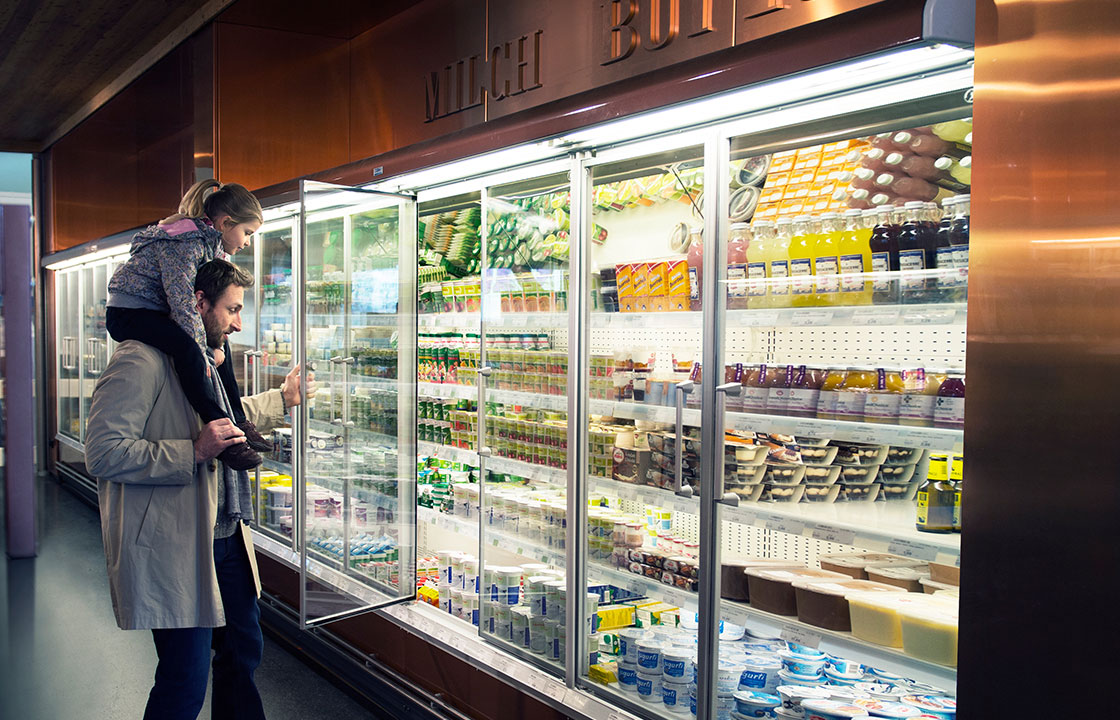
Introduction
As the temperature of the world is on the rise, cooling solutions have moved to the list of necessities from the list of luxury. It has become an essential element of daily existence, expanding its use case from just maintaining comfort on a hot and humid day. Cooling encompasses every process of human existence, including the fresh edibles that everyone consumes in their food. The cold chain processes are a series of continuous refrigerated facilities, which supports the supply of fresh farm produce safely from its place of production to the consumer's dining table, highlighting the concept of farm to fork.
India is one of the world's leading food producers, but due to the lack of state-of-the-art refrigeration and its supply chain issues, almost 20 percent of food products are wasted. As per the statistics, just six to seven percent of the food produced comes under the ambient of cold chains in India; on the contrary, this coverage is around 60 percent in developed countries. Therefore, it is important to establish efficient cold chain facilities that support maintaining the freshness of the food from the farm to the fork to increase the access of fresh food to all and guarantee food security to the citizens.
Danfoss, with its extensive range of refrigeration solutions, best-in-class AC drive applications, experience, and advanced technological know-how, is a trustworthy and competent partner for refrigeration applications. With its widest portfolio of highly energy-efficient refrigeration technologies, Danfoss is undoubtedly your cold chain partner with best-in-class expertise.
How does Danfoss ensure food quality and nutritional value are kept intact when products are moved from farm to fork?
1. Pre-cooling stages:
The Danfoss refrigeration solutions provide effective pre-cooling of the food produce, which boosts its freshness since the precise temperature is maintained throughout this stage. The precise temperature control keeps the growth of bacteria or other microbes in check. Further, it improves the shelf life of the products in the pre-cooling stages and the further stages of the food processing cycle which keeps the nutritional value intact.
2. Refrigerated transport processes:
Danfoss's advanced refrigeration solutions for transportation consist of trailers, trucks, and van refrigeration systems employing compact expansion valves, AC drives, refrigeration drives, ball valves, control valves, pressure switches, and regulators for efficient cooling processes. The system consists of efficient and quiet DC compressors which regulate the energy usage to its minimum levels.
The Danfoss cold storage refrigeration components are designed to complement the use of sustainable natural refrigerants whose production process is energy efficient, and their usage is environmentally safe. Additional components used in the refrigerated transport process include the control valves and sight glasses, which enable reliable storage system performance and diagnostics. Danfoss AC drives employed in these systems maintain the hygiene and help in enhanced control of the environment of the refrigeration systems.
3. Food processing facilities:
The state-of-the-art Danfoss SVL SS and ICF SS Flexline components in stainless steel are employed in the food processing units to maintain the optimum hygiene levels and increase the overall shelf life of the farm produce. The Danfoss pressure control valves and filters are designed and modulated to complement the usage in almost all the modern refrigerators operating at high pressures, including those which function on low GWP refrigerants like ammonia and CO2. With the use of technologically advanced Danfoss components, you can enhance the energy efficiency, overall performance, and safety of your food processing units.
4. Cold storage and retail refrigeration facilities:
Danfoss food retail solutions consist of highly efficient refrigeration solutions optimized for CO2 refrigeration processes and other natural refrigerants. The best-in-class Danfoss refrigeration solutions are curated to provide the lowest total cost of ownership, along with reducing the carbon footprint of the cold rooms and the retail refrigeration systems at the same time. The Danfoss cold room refrigeration solutions not only modulate the perfect conditions for food storage in temperature control environments, but they also help maintain near-zero downtime of the store applications. This ensures food safety and reduces food losses by maintaining the precise temperature.
Employing the advanced technology for an efficient and state-of-the-art cold chain infrastructure will undoubtedly lower the possibility of food losses during the cold storage chains, which will increase the farmer's income, adding to the growth of the country's GDP. Danfoss' technological solutions for the cold storage applications help to maintain the precise temperature in the cold chain facilities and increase the shelf life of the produce while keeping the nutritional value intact all through the various stages from farm to fork.
Conclusion
With its 89 years of engineering excellence, Danfoss is undoubtedly the global leader in refrigeration technology. Danfoss, through its advanced technological solutions and innovations, has altogether enhanced the efficiency of the cold chain facilities and helped reduce the food losses from the farm to the fork. Danfoss engineers the food storage and supply solutions for tomorrow; this will eventually help transform the lives of the people engaged in the food production and processing industry. Danfoss's portfolio covers diverse refrigerant solutions, including ammonia and freon-based refrigeration systems. Danfoss cold storage solutions make use of highly efficient and oil-free technologies, which enable the customers with the flexibility to design or redesign their cold chain facilities as per their specific requirements. With its futuristic technologies for the cold chain solutions, Danfoss is supporting all the nations to enhance their food availability by augmenting all the stages of the food processing and storage industry to cater to the increasing demand of its growing population.
